Who’s Who On The Beatles’ ‘Sgt. Pepper’s Lonely Hearts Club Band’ Album Cover
A who’s who guide to all of the famous icons on The Beatles’ groundbreaking album cover for ‘Sgt. Pepper’s Lonely Hearts Club Band.’
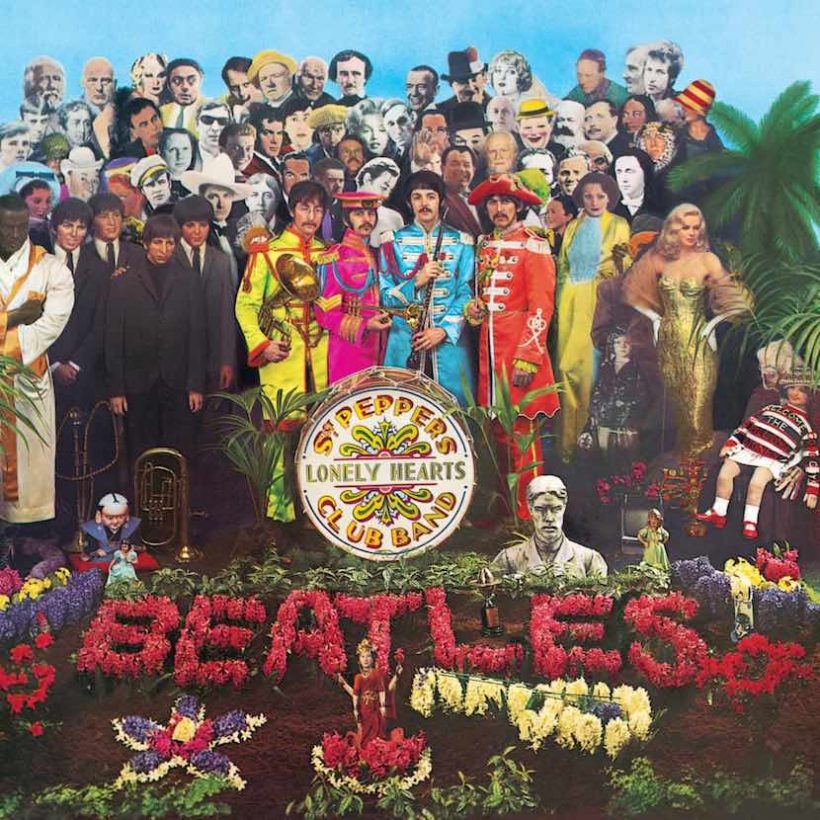
The Beatles’ Sgt. Pepper’s Lonely Hearts Club Band remains the most iconic album cover of all time. From Paul McCartney’s original concept to the final design, staged by British pop artist Peter Blake and his then-wife, Jann Haworth, it’s not just an album cover, but a dazzling display of modern art that defines its era.
Not only a groundbreaking design for the time, the artwork also broke the bank, costing almost £3,000 to create – well over £50,000 in today’s money and more than any other pop album sleeve at that time. The concept was for the four Beatles themselves to appear in costume as Sgt. Pepper’s Lonely Hearts Club Band, surrounded by a gathering of influential people as if they had just performed a concert. A total of 58 different people are depicted on the final artwork, which was photographed by Michael Cooper. As Peter Blake once said, doing ”this by using cardboard cut-outs, it could be a magical crowd of whomever they wanted.”
Those chosen from a collective list drawn up by John, Paul, George, Peter Blake, Jann Haworth, and London art dealer Robert Fraser. Looking to avoid any serious controversy, Jesus Christ and Adolf Hitler were deemed unsuitable for inclusion, while other choices, such as Mahatma Gandhi and Leo Gorcey, were removed for different reasons. Also notable by his absence is Elvis Presley, who, Paul McCartney later said, was “too important and too far above the rest to even mention.”
Those that made the final cut remain a fascinating cross-section of cultures, importance, and each individual Beatle’s own interests. To paraphrase the song, you might have known the band for all these years, so here we introduce to you, everyone else that featured on the Sgt. Pepper’s Lonely Hearts Club Band album cover…
Click here for an interactive version of the Sgt. Pepper who’s who.
1: Sri Yukteswar Giri
The author of the 1894 book The Holy Science, which attempted “to show as clearly as possible that there is an essential unity in all religions,” Sri Yukteswar Giri was guru to both Sri Mahavatara Babaji (No.27) and Paramahansa Yogananda (No.33). His prominent position in the top left-hand corner reflects George Harrison’s (No.65) growing interest in Indian philosophy. In August 1967, two months after the album’s release, The Beatles had their first meeting with the Maharashi Mahesh Yogi, at the Hilton Hotel on London’s Park Lane, where they were invited to study Transcendental Meditation in Bangor, North Wales.
2: Aleister Crowley
A hugely prolific occultist and author who formed his own religion, Thelema, Crowley’s central tenet was, “Do what thou wilt shall be the whole of the law. Love is the law, love under will.”
3: Mae West
Mae West initially refused to allow her image to appear on the artwork. She was, after all, one of the most famous bombshells from Hollywood’s Golden Age and felt that she would never be in a lonely hearts club. However, after The Beatles personally wrote to her explaining that they were all fans, she agreed to let them use her image. In 1978, Ringo Starr (No.63) returned the favor when he appeared in West’s final movie, 1978’s Sextette. The film also featured a cover version of the “White Album” song “Honey Pie.”
4: Lenny Bruce
Lenny Bruce revolutionized comedy in the 50s and 60s, ushering in a personalized style that influenced many later comedians. By the time he appeared on the Sgt. Pepper’s cover, he had been arrested for obscenity, further making him a countercultural hero not only for The Beatles, but also the Beatniks and Bob Dylan (No.15). He died of a drug overdose in August 1966.
5: Karlheinz Stockhausen
A German composer who pioneered the use of electronic music in the 50s and 60s, Stockhausen remains a godfather of the avant-garde, whose boundary-pushing music influenced The Beatles’ own groundbreaking experiments in the studio, starting with their tape experiments of Revolver’s “Tomorrow Never Knows.” Paul McCartney (No.64) introduced Stockhausen’s work to the group, turning John Lennon (No.62) into a fan; Lennon and Yoko Ono even sent the composer a Christmas card in 1969.
6: WC Fields
An American writer, comedian, and actor, WC Fields was the epitome of the all-around entertainer, whose career spanned both the silent film era and the talkies. His humor seeped into The Beatles’ own, while the vaudeville world he came from would also go on to influence songs the likes of “Your Mother Should Know.”
7: Carl Jung
Another progressive thinker who introduced new strains of psychology to the world, Jung was a Swiss psychiatrist whose Analytic Psychology school of thought pioneered the concept of individuation and self-realization in the early 1900s.
8: Edgar Allan Poe
Before being namechecked in “I Am The Walrus,” Edgar Allan Poe appeared on the right-hand side of the top row of the Sgt. Pepper collage. The poems and short stories that he wrote across the 1820s and 1840s essentially invented the modern horror genre, and also helped lay the groundwork for sci-fi and detective stories as we know them today.
9: Fred Astaire
In contrast to Mae West (No.3), Fred Astaire was reportedly thrilled to be asked to appear on the Sgt Pepper album cover. A child star who initially started dancing with his sister on stage, it was with Ginger Rogers that Fred made his greatest mark, in a series of classic Golden Age movies including Top Hat and Swing Time. He also appeared with John and Yoko in the 1972 television film Imagine.
10: Richard Merkin
Born in 1938, American painter and illustrator Richard Merkin was enamored with the early jazz period that flourished in the years before his birth. His modernist style matched the abstraction of jazz music, and also inspired Peter Blake’s tribute artwork, Souvenirs For Richard Merkin, created in 1966.
11: A Vargas Girl
Having made a name for himself designing posters for the Ziegfield Follies that appeared on Broadway across the 1910s to the 30s, Peruvian painter Joaquin Alberto Vargas Y Chávez went on to create a series of paintings of pin-ups. Known as the Varga Girls, they gained widespread exposure in Esquire magazine during the 40s, and also inspired a number of paintings that would appear on World War II fighter jets.
12: Leo Gorcey
Along with Huntz Hall (No.13), Leo Gorcey was one of The Bowery Boys, a group of on-screen hoodlums who grew out of The Dead End Kids and The East Side Kids. Their movie franchise ran throughout the 40s and 50s, and totaled 48 films. As the gang’s leader, Gorcey was a prototype street thug who set the template for many to follow, though he refused to let The Beatles use his image unless they paid him a fee, which was declined.
13: Huntz Hall
A fellow Bowery Boy, Huntz Hall was known for playing the putz of the group, Horace DeBussy “Sach” Jones.
14: Simon Rodia
Born in Italy in 1870, Simon Rodia emigrated to the United States with his brother when he was 15. Living in various places for the next 35 years, Rodia finally settled in the Watts district of Los Angeles in 1920, and began constructing the Watts Towers the following year. Consisting of 17 interconnected sculptures, the project took Rodia 33 years to complete.
15: Bob Dylan
Dylan and The Beatles influenced each other throughout the 60s, each spurring the other on to making music that pushed boundaries and reshaped what was thought possible of the simple “pop song.” It was Dylan who convinced John Lennon (No.62) to write more personal songs in the shape of “Help!,” while The Beatles showed Bob what could be achieved with a full band behind him, helping the latter “go electric” in 1965. It was with George Harrison (No.65), however, that Dylan struck up the longest-lasting friendship; the two played together often in the years that followed, forming The Traveling Wilburys and guesting on each other’s projects.
16: Aubrey Beardsley
The influence of Aubrey Beardsley’s pen-and-ink line drawings had already made itself felt on Klaus Voormann’s artwork for Revolver, and here the 19th-century illustrator, whose own style was influenced by Japanese woodcutting, takes a position not too far away from Oscar Wilde (No.41), Beardsley’s contemporary in the Aesthetic movement.
17: Sir Robert Peel
A founder of the modern Conservative Party, Sir Robert Peel served as the UK’s Prime Minister on two separate occasions, 1834-35 and 1841-46. While he served as the UK’s Home Secretary, Peel also helped form the modern police force – and his name is still evoked today, with the terms “bobbies” and “peelers” referring to policemen in England and Ireland, respectively.
18: Aldous Huxley
Published in 1954, Aldous Huxley’s work, The Doors Of Perception, was required reading for the countercultural elite in the 60s. Detailing the author’s own experience of taking mescaline, it chimed with the consciousness-expanding ethos of the decade, and even gave The Doors their name. He was nominated for the Nobel Prize for Literature in seven different years and died on November 22, 1963, the same day that both With The Beatles was released and President John F Kennedy was assassinated.”
19: Dylan Thomas
A beloved Welsh poet who died in 1953, The Beatles had all been fans of Dylan Thomas’ poetry by the time it came to creating the Sgt. Pepper’s artwork. “We all used to like Dylan Thomas,” Paul McCartney (No.64) later recalled. “I read him a lot. I think that John started writing because of him.” The late producer George Martin was also a fan, and even created a musical version of Thomas’ radio play, Under Milk Wood, in 1988.
20: Terry Southern
A satirical novelist and screenwriter, Terry Southern bridged the gap between the Beat Generation and The Beatles; he hung out with the former in Greenwich Village, and befriended the latter after moving to London in 1966. His dialogue was used in some of the most era-defining movies of the 60s, including Dr. Strangelove Or: How I Learned To Stop Worrying And Love The Bomb and Easy Rider.
21: Dion DiMucci
Originally the leader of Dion And The Belmonts, Dion DiMucci established a successful solo career with hits such as “The Wanderer” and “Runaround Sue” – doo-wop songs that characterized the rock’n’roll era that so influenced The Beatles.
22: Tony Curtis
Striking and versatile, Tony Curtis was a Hollywood idol who made a dizzying amount of movies (over 100) between 1949 and 2008. He will always be remembered for his role alongside Jack Lemmon and Marilyn Monroe (No.25) in the 1959 cross-dressing caper Some Like It Hot, but another stand-out remains his performance alongside Burt Lancaster as fast-talking press agent Sidney Falco in the 1957 film noir The Sweet Smell Of Success.
23: Wallace Berman
American artist Wallace Berman more than earned his place on the album cover: his pioneering “assemblage art” took a three-dimensional approach to the collage style that Peter Blake excelled in, and is an influence that can be felt on the Sgt. Pepper’s design.
24: Tommy Handley
Like Max Miller (No.37), Tommy Handley was another British wartime comedian. Born in Liverpool, he would have been a local hero for The Beatles, and his BBC radio show, ITMA (“It’s That Man Again”) ran for ten years, from 1939 to 1949, until Handley’s sudden death from a brain hemorrhage.
25: Marilyn Monroe
Something of a Mae West (No.3) for her generation, Marilyn Monroe starred alongside Tony Curtis (No.22) in Some Like It Hot, and became the Hollywood pin-up of the 50s. Her shock death still attracts conspiracy theories; Sgt. Pepper was officially released on what would have been her 41st birthday ( June 1, 1967).
26: William Burroughs
From Bob Dylan (No.15) to David Bowie, Tom Waits to Steely Dan, Beat Generation author Burroughs has influenced many a songwriter over the decades. Less known is that, according to Burroughs himself, he witnessed Paul McCartney (No.64) working on “Eleanor Rigby.” As quoted in A Report From The Bunker, a collection of conversations with author Victor Bockris, Burroughs recalled McCartney putting him up in The Beatles’ flat on 34 Montagu Square: “I saw the song taking shape. Once again, not knowing much about music, I could see that he knew what he was doing.”
27: Sri Mahavatara Babaji
A student of Sri Yukteswar Giri (No.1), Sri Mahavatara Babaji is said to have revived the practice of Kriya Yoga meditation, which was then taken to the West by Paramahansa Yogananda (No.33). In the latter’s memoir, Autobiography Of A Yogi, Yogananda claims that Babaji still lives in the Himalayas, but will only reveal himself to the truly blessed.
28: Stan Laurel
Together, Stan Laurel and Oliver Hardy (No.30) appeared in 107 films, mostly from the late 20s to the mid-40s, including iconic outings Block-Heads and Way Out West. Both had passed away before Sgt. Pepper was released: Hardy on August 7, 1957, and Laurel on February 23, 1965.
29: Richard Lindner
Lindner was born in Germany in 1901, but moved to the US in 1941, in order to escape the Nazis. In the 50s he developed a style of painting that drew upon Expressionism and Surrealism, along with the hyper-sexualised lifestyle that he encountered in New York. After appearing on the Sgt. Pepper cover, his abstract style would find echoes in the animated feature film Yellow Submarine.
30: Oliver Hardy
The larger one with the mustache from Laurel And Hardy, Oliver played the irascible foil to the hapless Stan (No.28). A recording by the duo (“The Trail Of The Lonesome Pine”) reached No.2 in the UK singles chart in December 1975.
31: Karl Marx
A prolific author, philosopher, and economist, Karl Marx is best known for his 1848 pamphlet The Communist Manifesto, which outlined the central tenets of his theories, and single-handedly kick-started a political movement. His work continues to influence modern economic thought.
32: HG Wells
Along with Edgar Allan Poe (No.8), HG Wells shaped the modern sci-fi story. After penning groundbreaking novels such as The Time Machine and War Of The Worlds in the late 1800s, he turned to writing more political works and also became a four-time nominee of the Nobel Prize In Literature.
33: Sri Paramahansa Yogananda
Yogananda learned the practice of Kriya Yoga at the feet of Sri Yukteswar Giri (No.1), who passed on the teachings of Sri Mahavatara Babaji (No.27). In 1920, Yogananda set sail for America, where he founded the Self-Realization Fellowship and introduced the Western world to meditation.
34: Hairdressers’ wax dummy No.1
One of two wax dummies borrowed from a local hairdresser. This one wears a striped red-and-yellow hat, while its counterpart (No.36) sports a green bonnet.
35: Stuart Sutcliffe
A friend of John Lennon’s (No.62) dating back to their time studying at Liverpool College Of Art, Stuart Sutcliffe was The Beatles’ original bassist. While the group were living in Hamburg and playing around the city’s clubs, Sutcliffe met photographer Astrid Kirchherr, who gave The Beatles their distinctive early 60s haircuts. Sutcliffe left the group in order to enroll in the Hamburg College Of Art, but his career was tragically cut short when he died, aged 21, from a brain aneurysm.
36: Hairdressers’ wax dummy No.2
On the opposite side of the gathering to the first wax dummy (No.24), this second dummy takes its place next to Stuart Sutcliffe (No.35)
37: Max Miller
Another vaudeville star, British comic Max Miller picked up the nickname “The Cheeky Chappie.” Known for his colorful dress sense and his risqué humor, Miller was the master of the double entendre. He also appeared in a number of films throughout the 30s.
38: Petty Girl No.1
Designed by George Petty, like the Vargas Girls (No.11), Petty Girls were pin-up paintings that appeared in Esquire, between 1933 and 1956, and also found a home on the front of World War II fighter planes – notably on the B-17 fighter jet nicknamed Memphis Belle.
39: Marlon Brando
In his iconic role of Johnny Strabler in the 1953 movie The Wild One, Marlon Brando captured the growing frustrations of the generation that gave birth rock’n’roll. Hailed as one of the greatest actors of all time, it’s also notable that Brando’s rivals in The Wild One, The Beetles, were almost-namesakes of The Beatles.
40: Tom Mix
As the man who became Hollywood’s first-ever Western icon, Tom Mix starred in a staggering 291 movies between 1909 and 1935.
41: Oscar Wilde
A playwright, novelist, and poet, Oscar Wilde left no shortage of aphorisms for which he is remembered, along with the novel The Picture Of Dorian Gray and plays such as The Importance Of Being Earnest and An Ideal Husband.
42: Tyrone Power
A Hollywood heartthrob of the 30s, 40s, and 50s, Tyrone Power was known for starring as the titular hero in the swashbuckling adventure film The Mark Of Zorro, though he also played the role of outlaw cowboy Jesse James, and starred in musicals, romantic comedies, and war movies.
43: Larry Bell
An American artist known for large sculptures that play with light and space, Larry Bell first made his mark with a series of “shadowboxes” constructed in the 60s, and has since gone on to receive acclaim for his wide-ranging work, including the Vapor Drawings of the 80s and a subsequent range of Mirage Drawings.
44: Dr. David Livingstone
It’s probably fair to say that Dr. Livingstone was to geographic exploration what The Beatles were to sonic innovation: fearless, ever questing, and mapping out new territories for the world. The famous “Dr. Livingstone, I presume?” saying remains in common use today, and can be traced back to a meeting between Livingstone and explorer Henry Morton Stanley, who’d been sent on an expedition to find the former, who had been missing for six years. Livingstone was discovered in the town of Ujiji, in what is now known as Tanzania.
45: Johnny Weissmuller
An Olympic gold-medallist of the 20s, Johnny Weissmuller first made a name for himself as a swimmer before turning his eye to Hollywood. It was as Tarzan that he made his biggest mark on popular culture, returning to the role in a series of films and devising an iconic yell forever associated with the jungle hero.
46: Stephen Crane
Barely visible tucked in between the head and raised arm of Issy Bonn (No.47), Stephen Crane was a Realist novelist who, though dying aged 28, in 1900, is regarded as one of the most forward-thinking writers of his generation. His work incorporated everyday speech, which gave his characters an added realism, and his novels took an unflinching look at poverty.
47: Issy Bonn
A contemporary of Max Miller (No.37), Issy Bonn was a British-Jewish vaudeville star who also found fame on BBC Radio.
48: George Bernard Shaw
George Bernard Shaw was an Irish playwright who helped shape modern theatre. The first person to receive both a Nobel Prize (in 1925, for Literature) and an Oscar (in 1939, for Best Adapted Screenplay, for Pygmalion). His works continue to be staged in the 21st Century.
49: HC Westermann
An American sculptor who served in the US Marine Corps in both World War II and the Korean War, HC Westermann took the skills he learned as a carpenter and turned them to creating Expressionist sculptures that criticized the horrors he had witnessed while fighting overseas.
50: Albert Stubbins
Like Tommy Handley, Albert Stubbins (No.24) was a local Liverpool hero. Born in Wallsend, he became center-forward for Liverpool FC in 1946, where he helped the team win the League Championship the following year.
51: Sri Lahiri Mahasaya
A disciple of Sri Mahavatara Babaji (No.27), Sri Lahiri Mahasaya learned the discipline of Kriya Yoga in 1861, and subsequently passed the teachings down to Sri Yukteswar Giri (No.1), who in turn, passed them on to Sri Paramahansa Yogananda (No.33), of whom Mahasaya said, “As a spiritual engine, he will carry many souls to God’s Kingdom.”
52: Lewis Carroll
Speaking to the BBC in 1965, John Lennon (No.62) declared his love for Alice In Wonderland and Alice Through The Looking Glass, revealing, “I usually read those two about once a year, because I still like them.” It’s perhaps no surprise, then, that the man who wrote the poem “The Walrus And The Carpenter,” which influenced Lennon’s lyrics for “I Am The Walrus,” is given a prominent display on the Sgt. Pepper’s album cover.
53: TE Lawrence
Immortalized in the 1962 film Lawrence Of Arabia, in which he was played by Peter O’Toole, TE Lawrence was a British archaeologist and military officer who became a liaison to the Arab forces during the Arab Revolt of 1916 to 1918. His 1922 book, Seven Pillars Of Wisdom, recounted his experiences during the war and laid the foundations for much of his legend.
54: Sonny Liston
The Beatles were famously photographed with boxing legend Cassius Clay in February 1964, in Miami, Florida. But it’s a wax model of boxer Sonny Liston, the man that Clay defeated later that month in order to become the heavyweight champion, who appears on the Sgt. Pepper cover. Liston had held the heavyweight title for two years, from 1962 to ’64, before losing it to Clay, who subsequently changed his name to Muhammad Ali.
55: Petty Girl No.2
Like its counterpart (No.38), this Petty Girl was one of a series of paintings by George Petty.
56, 57, 59 and 60: wax models of The Beatles
In a perfectly postmodern touch, The Beatles included wax models of their former Beatlemania-era selves looking on at their modern incarnation in full military psychedelic regalia. The models of John (No.57), Paul (No.60), George (No.56), and Ringo (No.59) were borrowed from Madame Tussauds for the Sgt. Pepper’s photoshoot.
58, 71, and 73: Shirley Temple
The very definition of a “triple threat,” Shirley Temple was an actress, singer, and dancer who became a child star in the 30s. She also appears on the Sgt. Pepper album cover three times over, her hair poking out from between the wax figures of John Lennon (No.62) and Ringo Starr (No.63), and also standing in front of the model of Diana Dors (No.70). There’s also a cloth figure of the star off to the far right, wearing a jumper emblazoned with the slogan “Welcome The Rolling Stones.”
61: Albert Einstein
Barely visible above John Lennon’s right shoulder (No.62), Albert Einstein was a physicist whose theory of relativity was light years ahead of its time and changed the world forever.
62, 63, 64 and 65: The Beatles
Resplendent in their military chic (or should that be military psych?) garb, John (No.62), Ringo (No.63), Paul (No.64), and George (No.65) presented themselves as Sgt. Pepper’s Lonely Hearts Club Band, looking like a psychedelic brass band brandishing a French horn, trumpet, cor anglais, and flute, respectively. Like the album cover itself, The Beatles’ Sgt Pepper costumes would become some of the most iconic band outfits ever, instantly recognizable and forever woven into the fabric of our culture.
66: Bobby Breen
Like Shirley Temple (Nos.58, 71, and 73), Bobby Breen was a child star of the 30s. After enlisting in the military and entertaining the troops during World War II he became a nightclub singer, and, in 1964, even made some recordings for Berry Gordy’s Motown label.
67: Marlene Dietrich
Just as The Beatles did, Marlene Dietrich had continually reinvented herself, moving from silent movies filmed in 20s Berlin to high-profile Hollywood films of the 30s, before taking to the stage as a live performer later in her career. In November 1963 she appeared at the same Royal Variety Performance as The Beatles and was famously photographed with them.
68: Mohandas Karamchand Gandhi
Famed for his non-violent protests and for leading the movement for Indian independence from British rule, Mahatma Gandhi was ultimately removed from the Sgt. Pepper album cover due to concerns that the use of his image would cause offense to the people of India.
69: Legionnaire from The Royal Antediluvian Order Of Buffaloes
Founded in London 1822, the Royal Antediluvian Order Of Buffaloes continues its work to this day, with outposts in Northern Ireland, Cyprus, Africa, South Africa, India, the Middle East, Australia, New Zealand, and Canada. Its motto is “No man is at all times wise” and the organization continues to look after its own members, dependents of deceased members, and charities.
70: Diana Dors
Hailed as the British answer to Marilyn Monroe (No.25), Diana Dors starred mostly in risqué sex comedies, but later branched out into singing, notably with the Swinging Dors album of 1960. Her career found a new lease of life the following decade, both as a cabaret star and a tabloid sensation.
72: Cloth grandmother figure
Created by Jann Haworth, then-wife of Peter Blake, and co-creator of the Sgt Pepper album cover, this cloth grandmother doll was one of a number of stuffed artworks she made from textiles.
74: Mexican Tree Of Life candlestick
Traditionally, Mexican Tree Of Life sculptures came from Metepec, in the State Of Mexico, and depicted scenes from The Bible. The one on the Sgt. Pepper album cover is also a candlestick.
75: Television set
If the Tree Of Life candlestick (No.74) represented a more traditional way of telling a story, the portable TV9-306YB Sony television set was a wholly modern storytelling apparatus in 1967.
76, 77, and 78: stone figures
Along with the stone figure (No.77) that can be seen below the feet of the Shirley Temple doll (No.73), the stone figure of a girl (No.76) was one of a number of statues that John Lennon (No.62) and George Harrison (No.65) brought from their homes for inclusion on the cover. The most prominent of these is the bust positioned to the right of the bass drum (No.78), which came from Lennon’s house Kenwood, in Weybridge, Surrey, where he lived from 1964 to 1969.
79: Trophy
It’s said that the trophy nestling in the crook of the “L” of “BEATLES” was a swimming trophy awarded to John Lennon (No.62) when he was a child.
80: Lakshmi doll
Positioned front and center on the album cover is a doll of Lakshmi, the Indian goddess of wealth, fortune, and prosperity.
81: Sgt. Pepper drum skin
The famous Sgt Pepper drum skin shows one of two designs by Joe Ephgrave, a fairground artist. His second design used more modern lettering and was attached to the other side of the bass drum, giving the group two options during the photoshoot.
82: Hookah
Originating from India, the hookah is a tobacco-smoking instrument designed so that the smoke is filtered through a water basin before being inhaled. Its inclusion on the Sgt Pepper album cover is a nod to both George Harrison’s (No.65) love of India and John Lennon’s (No.62) love of Lewis Carroll (No.52), whose Caterpillar in Alice’s Adventures In Wonderland smokes a hookah.
83: Velvet snake
Placed beneath Sonny Liston (No.54) is a purple velvet snake most likely to have been one of Jann Haworth’s cloth designs.
84: Fukusuke statue
Identifiable by its oversized head and ears, the Fukusuke doll originates from Japan and is said to bring good luck.
85: Stone figure of Snow White
Just in front of the Fukusuke doll (No.84) is a statue of Snow White, from Grimms’ Fairy Tales.
86: Garden gnome
Barely visible to the left of the “B” in “BEATLES” is a typical garden gnome, the likes of which originated in 19th-century Germany.
87: Tuba
Like the French horn, trumpet, cor anglais, and flute held by each of the individual Beatles (Nos.62, 63, 64, and 65), the tuba is a mainstay of brass band instrumentation.






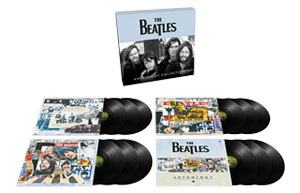

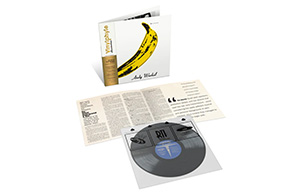
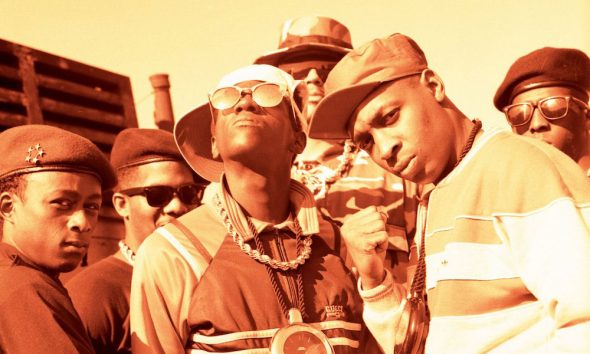
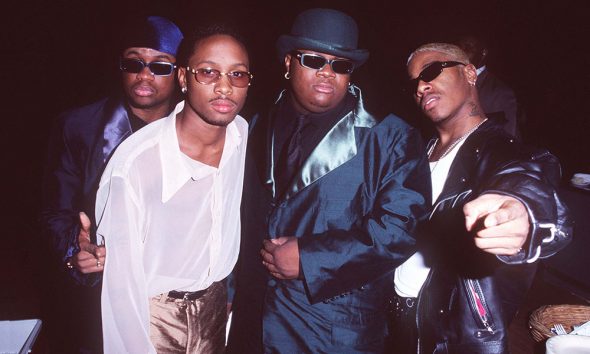
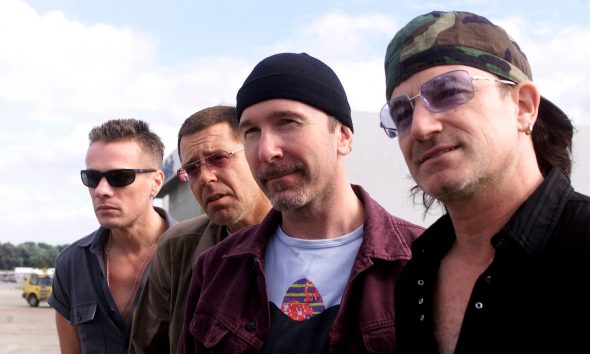

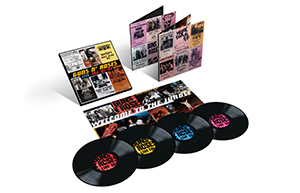
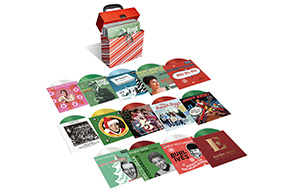
BrianPDX
May 27, 2017 at 2:00 am
I had thought some or at least one of the Rolling Stones were also on the cover. Thought wrong I guess. Interesting article.
Phyllis
May 28, 2017 at 3:54 pm
I was 14 years old, my parents had been divorced for 4 years by 1967. The song “SHE’S LEAVING HOME” BECAME MY MOST OVERPLAYED SONG ON THE SGT. PEPPERS ALBUM. The iconic list of famous people on it’s cover was so brilliantly thought out! Not that I would have expected anything else! Thank you for this amazing explanation!
Robert Wood
June 1, 2017 at 5:39 am
In June of 1967 I got the album for my 14th birthday. This year I hope to get the deluxe cd “when I’m 64”.
Vernon Rylands Parton
September 7, 2017 at 12:52 pm
THE PEPPER CODE CRACKED. Search “Beatles” “Revelation” “Beacon” on a popular video site, and then search the comments section for the last fortnight. The sleeve of Sgt Pepper was the expression of a fifty year plan which is about to reach its culmination.
Nicholas Ennos
November 8, 2017 at 11:22 am
Perhaps the 50 year plan was to reveal in 50 years time that most of the people on the cover, as well as most celebrities and politicians, were secret transsexuals, once the public had been sufficiently prepped for this by the promotion of the transgender agenda.
Vernonsucks
September 21, 2017 at 8:53 pm
Vernon, shut up, stupid.
Nicholas Ennos
November 8, 2017 at 11:17 am
I think most of the people on the cover were chosen because they were secret transsexuals. They include Alastair Crowley who practised sex magic and described himself as the divine androgyne.
Summer
January 7, 2018 at 4:30 am
Wrong, #87 is NOT a tuba. A tuba is larger. That is called a euphonium. Look it up.
Ian Iachimoe
January 15, 2018 at 12:42 am
69 does not appear to be a member of the Royal Antediluvian Order Of Buffaloes, but does appear to be a concealed GI Gurdjieff.
Vernon Rylands Parton
February 18, 2018 at 3:28 am
33/45/78 degrees to Marx/Wells
Wb
April 16, 2019 at 2:07 pm
The people on the cover were all practising Satanists, tasked with destroying the Christian beliefs on various levels.
Ken Heart
May 24, 2019 at 9:03 pm
This is very interesting but would make a whole lot more sense if the numbers were also on the picture!
Rodrigo
May 20, 2020 at 7:51 pm
I think you should point out that the tree of life was a gift, which serves as a replacement for the photo of Comedian, singer German Valdes Tin Tan from Mexico, who was a top star of the mambo and Pachuco era in Mexico.
Hutchman
January 21, 2021 at 3:53 pm
The Vargas Girl inspired a number of paintings that would appear on World War II fighter jets? There were no jets used in WWII except for a few Germany tried in desperation toward the end of the war. American bombers used pinups on their fuselages and were very famous and quite common in WWII.
James Molloy
December 19, 2023 at 11:42 am
Interesting list. No Muhammie ALI? jONATHAN sWIFT? mARLON bRANDO? cHARLIE cHAPLIN?
sAL mINEO?. WHO lENNON MUCH LIKED? EVEN OFFERING A REWARD FOR THE CAPTUREZ OF HIS KILLER? bRAM sTOKER? aRTHUR cONAN dOYLE? f sCOTT fITZGERALD? eLVIS? OF COURSE…..
hAPPY tRAIL EVERYBODY
Mickie Bitsko
December 31, 2023 at 11:35 am
The image said to be ‘Oliver Hardy’ is more likely to be Roscoe ‘Fatty’ Arkbuckle (American silent film comedian whose career was destroyed by a scandal involving the death of a young woman). Hardy had a ‘toothbrush’ mustache for nearly all of his career. Arbuckle never had a mustache.